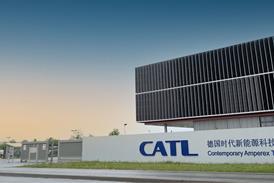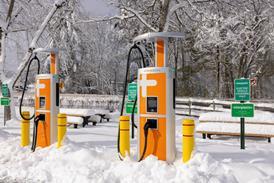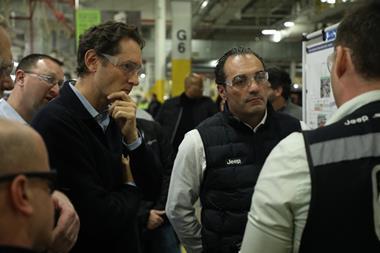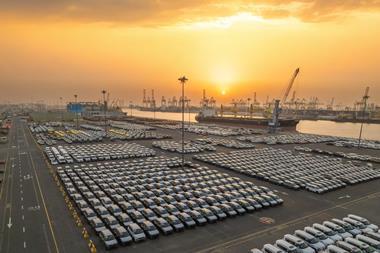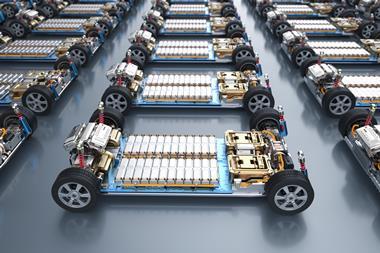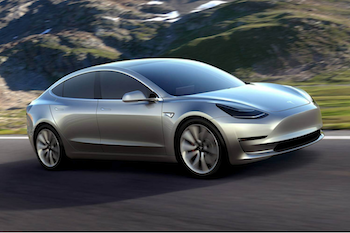 Tesla has announced that it is stepping up its production plans substantially, with expectations to increase output by more than 50% in the second half of the year compared to its current rate, while also launching production of the first cells by the end of this year at its 'Gigafactory' for lithium-ion batteries.
Tesla has announced that it is stepping up its production plans substantially, with expectations to increase output by more than 50% in the second half of the year compared to its current rate, while also launching production of the first cells by the end of this year at its 'Gigafactory' for lithium-ion batteries.
The company has also said that it would build 500,000 units annually by 2018, two years ahead of its original schedule. However, questions remain about the company's ability to meet such targets following a number of supply chain and production bottlenecks that have delayed prior launches. Such doubts grew following the departure of two senior manufacturing executives.
Driven by a 45% increase in orders for its Model S sedan in the first quarter compared to the same period in 2015, and reservations for the Model X SUV, the company reached a new quarterly production record in the first quarter at 15,510 vehicles, up 10% from the fourth quarter of 2015. However, a letter to investors by the company's chairman, Elon Musk, and chief financial officer, Jason Wheeler, acknowledged that production of the Model X, which reached just 2,659 units, was insufficient following production and supply chain constraints.
However, Musk and Wheeler wrote that such problems had now been resolved, and that the company expected second quarter production to reach 20,000 units, while the second half of the year would increase to around 50,000 units. The company plans to deliver 80,000-90,000 units of the Model S and Model X for the year. Tesla built around 55,000 units in 2015.
Furthermore, construction of the Gigafactory in Nevada is ahead of schedule, according to Tesla. Production of the first cells will start in the fourth quarter of this year, with the factory set to be completed in 2017.
Most ambitiously, the carmaker plans to start serial production of the recently unveiled, more affordable Model 3 by late 2017, and ramp up total production across all three models to 500,000 units the following year. Previously, Musk had said Tesla wouldn't reach that level until the end of the decade.
Musk has also said he would like to produce around 1m units a year by 2020.
However, he has warned that spending will increase at the same time, and that the company would probably need to raise more capital. Tesla had hoped to make a net profit by the final quarter of 2016 but has now said that its capital spending will increase by around 50%, to $2.25 billion. Tesla’s net loss grew to $282.3m for the first quarter of this year, up from $154.2m this time last year.
The company’s revenue is up to $1.15 billion from $939.9m (with 'non-GAAP', adjusted revenue at $1.6 billion after allowing for deferred revenue from lease accounting used for indirect leases and cars sold with a resale value guaranteed).
Tesla's new production targets are certainly ambitious given the issues the OEM has had in the past. Putting the figure into context, there were 234,000 electric car sales globally in 2015, so Tesla would have to produce more than the entire electric vehicle industry did last year.
On top of that, two top manufacturing executives are leaving Tesla ahead of the production ramp-up: Greg Reichow, vice-president of production; and Josh Ensign, vice-president of manufacturing. There is speculation that the two are leaving over delays and recalls with the Model S and X. From the initial projected launch dates, the carmaker's originally model, the Roadster, was delayed around nine months, the Model S more than six months, and the Model X more than 18 months.
Musk and Wheeler said that Tesla was aiming to keep the Model 3 "relatively simple to build at high volume and high quality", which suggests that company is thinking more carefully about managing its supplier and production capacity.
While the ramp-up is ambitious, it is needed based on current interest in the company's products. Interest in the recently announced Model 3 sedan has been huge. Since it was unveiled on March 31st, there are around 400,000 people who have put down the $1,000 deposit required (which is returnable).To meet the huge production increase, the Model 3 will have to come to market on time – something that hasn’t yet been achieved – and the production of batteries will need to increase too. Tesla’s Gigafactory will need to start production as scheduled in 2017, and reach full capacity by 2020. Tesla has said that it hopes to be able to drive down the per kilowatt hour cost of the battery packs by more than 30%, another key requirement if Tesla wants to start seeing profit.
Another no-go stateEarlier this week, Tesla was denied the chance to sell its vehicles in Connecticut. Just as Apple does with its Apple stores, Tesla wants to own and operate stores, rather than dealerships, in North America. However, direct-to-consumer sales is illegal in many US states according to existing dealer franchise laws. Tesla has been fighting this ruling in many states.
In Connecticut, Tesla even offered to build a regional distribution centre that would bring around 150 new jobs to the state, along with the jobs its five proposed stores would generate. However, this was not enough, and negotiations between Tesla, dealerships and General Motors, which lobbied strongly against the proposal, fell through.
Christopher Ludwig contributed to this report.


















